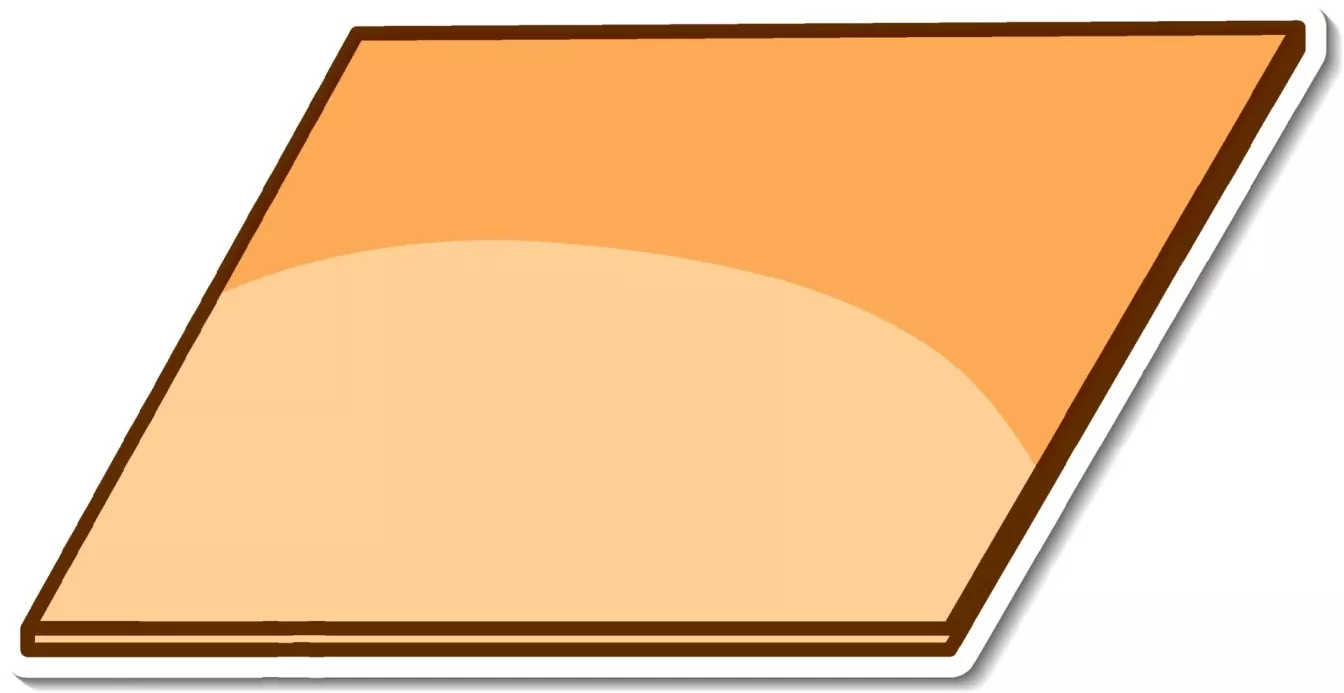Understanding the area of a Trapezium: A simple guide

In this article, we'll explore the dimensions, calculations, and intricacies of trapeziums. Let's embark on this journey to understand the area of a trapezium better.
Understanding the Trapezium: The basics
Let's begin with the fundamental concept. A trapezium is a four-sided geometric figure, a flat shape in two dimensions. One of its defining characteristics is having one pair of parallel sides. But here's the fascinating part: trapeziums come in various shapes and sizes, and they can appear in a multitude of forms.
Anatomy of a Trapezium: Components and terminology
In a trapezium, you'll encounter specific components and terminology:
- Bases: Trapeziums have two bases. One base is longer, often denoted as "a," while the other is shorter, represented as "b." These bases are crucial for our area calculation.
- Height: The height of a trapezium, marked as "h," is the perpendicular distance between the two bases.
- Non-parallel sides: In addition to the bases, a trapezium has two non-parallel sides. These sides can vary in length, and they might slant or tilt in different ways, giving each trapezium its unique appearance.
The area formula
Now, let's explore the magic formula that helps us find the area of a trapezium:
Area = ½ × (Sum of the Lengths of the Bases) × Height
This formula is the key to unlocking the area of any trapezium. But to truly comprehend it, we need to break it down further.
Height and bases: Critical elements
To make the formula work for us, we must understand the elements it comprises:
- Bases: As mentioned earlier, we have two bases. The longer one is designated as "a," and the shorter one is "b."
- Height: The height of the trapezium, "h," is the vertical distance that separates the two bases. This height is essential for our area calculation.
Step-by-step calculation of the area
Here's how to calculate the area step by step:
- First, add the lengths of the two bases: a + b.
- Second, divide this sum by 2: (a + b) ÷ 2.
- Finally, multiply the result by the height, "h."
Our area formula simplifies to: Area = ½ × (a + b) × h.
Visualisation with real-life scenarios
Now, let's bring this abstract concept into the real world. Imagine you have a garden bed shaped like a trapezium. The longer base, "a," measures 8 feet, the shorter base, "b," is 4 feet, and the height, "h," is 6 feet.
Using our formula: Area = ½ × (8 + 4) × 6 = ½ × 12 × 6 = 36 square feet.
So, the area of your garden bed is 36 square feet. This practical example shows how the formula works.
Practical problem solving: Enhancing your skills
To truly grasp the concept, it's essential to practice.
Here are two problems for you to tackle:
- You have a trapezium with bases a = 10 cm and b = 6 cm. The height, "h," is 8 cm. Calculate the area.
- In another trapezium, a = 12 inches, b = 7 inches, and h = 5 inches. What's the area?
Always remember to apply our trusted formula: Area = ½ × (a + b) × h.
The real-world significance of Trapeziums
You might be wondering, "Why do I need to understand this concept?" Well, it's like having a superpower in geometry. Knowledge of the area of a trapezium helps you measure irregular shapes, which can be immensely practical in various real-life scenarios. For example, you could use it to calculate the area of a garden, a room for painting, or even the shingle material needed for a trapezium-shaped roof.
Conclusion: Mastering the art of area calculation
Congratulations, you've now mastered the art of finding the area of a trapezium. We've taken a potentially complex concept and made it easy to understand. Armed with this knowledge, you can tackle a wide range of real-world problems and apply your geometry skills effectively. Keep practising, and remember, mathematics is a superpower that surrounds us in our everyday lives.
 SG
SG  VN
VN 











